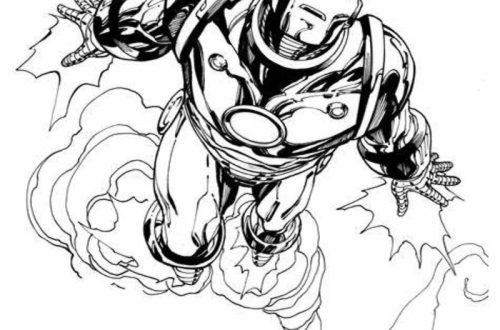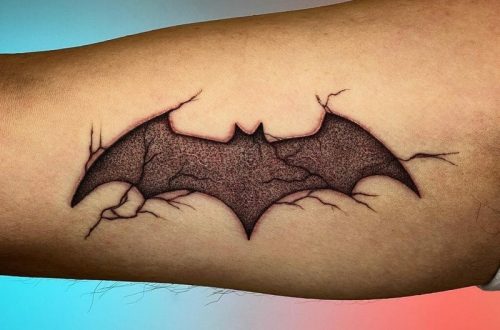Introduction to Iron Man’s Villains
Iron Man, also known as Tony Stark, has faced a vast array of villains. These adversaries challenge him on multiple fronts, from intellect and morality to physical strength. Iron Man rogues gallery reflects not only his brilliance as an inventor but also his flaws as a person. These villains push Iron Man to evolve, making his battles both personal and heroic.
Overview of Iron Man’s adversaries
Iron Man’s enemies come from diverse backgrounds. Some are corporate rivals, eager to topple Stark Industries. Others are technological geniuses who match or surpass Tony’s intellect. Certain foes wield immense power, blending superhuman abilities with sophisticated tech. Together, they form a group of villains that are as complex as Iron Man himself. Each brings unique challenges to the table, representing different aspects of Tony Stark’s life and struggles.
The significance of Iron Man Rogues Gallery in Marvel Comics
Iron Man rogues gallery is essential to his story in Marvel Comics. These villains symbolize Tony Stark’s greatest fears and flaws. Corporate rivals reflect his struggles with greed and ethics in business. Technological adversaries test his innovation and ingenuity. Mystical and superpowered threats push him beyond his comfort zone. Through these battles, Iron Man’s character grows, reinforcing his place as a key Marvel hero. Without these villains, his journey would feel incomplete.
Classic Villains in Iron Man Rogues Gallery
Iron Man’s classic villains are iconic figures in Marvel Comics. They have shaped Tony Stark’s storylines and tested him in profound ways. From powerful adversaries to cunning rivals, these enemies reflect Iron Man’s personal and professional struggles. Here are three of the most notable villains in Iron Man rogues gallery.
The Mandarin: Iron Man’s arch-enemy
The Mandarin is one of Iron Man’s most defining foes. He wields ten powerful rings, each with unique abilities. These rings grant him immense power, making him a challenging enemy. The character blends mysticism with technology, opposing Tony’s reliance on science. The Mandarin also symbolizes themes of control and ambition. As a recurring antagonist, he forces Iron Man to test his limits.
Obadiah Stane (Iron Monger): A master manipulator
Obadiah Stane, also known as Iron Monger, is Tony Stark’s corporate rival. He is a brilliant strategist and ruthless businessman. Stane exploits any weakness he finds, using manipulation to gain an upper hand. In battle, he dons the Iron Monger armor, a powerful weaponized suit. Stane’s rivalry with Stark highlights corporate greed and personal betrayal, creating one of Iron Man’s most intense conflicts.
Justin Hammer: Corporate rival turned foe
Justin Hammer is another influential corporate enemy. He is driven by jealousy of Tony Stark’s success. Hammer funds and equips various villains to undermine Iron Man. Though he lacks physical abilities, his wealth and influence make him dangerous. He represents the dark side of corporate competition. Hammer’s actions emphasize how power can corrupt business pursuits.
These classic villains are vital to Iron Man’s legacy. Each brings unique challenges to his journey, enriching the complexity of his character.
Technological Threats and Armored Opponents
Iron Man’s rogues gallery includes foes who challenge him through advanced technology and armored strength. These villains often mirror Tony Stark’s own genius, pushing him to innovate further. Below, we explore three notable technological threats that have tested Iron Man in unique ways.
Crimson Dynamo: The Soviet counterpart to Iron Man
The Crimson Dynamo is one of Iron Man’s most formidable opponents. He represents the Soviet Union’s attempt to rival America’s technological advances. Created by Russian scientists, the Crimson Dynamo wears heavily armored suits equipped with powerful weapons. Over the years, multiple individuals have taken up the mantle of Crimson Dynamo, each bringing their unique style to the fight. This villain embodies the competitive spirit of the Cold War, pitting genius against genius. Tony Stark’s battles with the Crimson Dynamo are symbolic of ideological and technological clashes.
Titanium Man: A cold-war era antagonist
Titanium Man is another armored adversary rooted in political rivalry. Unlike the Crimson Dynamo, his suit focuses on brute strength and durability. The character is Boris Bullski, a former Soviet officer, who, like Crimson Dynamo, seeks to defeat Iron Man to prove the USSR’s superiority. Titanium Man’s massive frame and destructive power make him a tough challenge for Iron Man. His presence underscores themes of power, conflict, and unchecked ambition during the Cold War era. This makes him a significant figure in Iron Man’s history.
Ezekiel Stane: A next-gen technological genius
Ezekiel Stane, the son of Obadiah Stane, is a new breed of villain. Unlike older foes, Ezekiel mixes youth with cutting-edge tech. He upgrades his body with cybernetic enhancements, far beyond conventional armor suits. With his intellect, he creates bio-weapons and other devastating tools to challenge Iron Man. Ezekiel’s mission is personal, fueled by hatred for Tony Stark’s role in his father’s downfall. He represents a shift in Iron Man’s rogues gallery, focusing on the future of technology and innovation.
Superpowered and Mystical Villains
Iron Man has faced many enemies beyond technology and corporate rivalry. Superpowered and mystical villains challenge his intellect and expertise. These foes often stretch the limits of Tony Stark’s abilities and values. Below, we explore three unique villains in this category.
Ghost: A phase-shifting hacker and saboteur
Ghost is an expert in stealth and hacking. Using advanced tech, Ghost becomes invisible and intangible. These phase-shifting powers allow Ghost to infiltrate and sabotage Stark Industries easily. Ghost is driven by revenge against corporate greed and injustice. This villain challenges Stark’s security measures and moral stance. Ghost represents the dangers of uncontrolled technology when paired with personal vengeance.
Madame Masque: A dangerous and enigmatic presence
Madame Masque is a skilled assassin, spy, and manipulator. Her trademark golden mask hides disfigured features, symbolizing her dark past. As a criminal mastermind, she uses strategy and deceit to target Iron Man. Her vendetta against Stark often intertwines personal emotions and professional cruelty. Madame Masque tests Stark’s emotional resilience and ability to outmaneuver complex schemes. She signifies intrigue and moral ambivalence within Iron Man’s rogues gallery.
Ultimo: The giant robot with destructive power
Ultimo is one of Iron Man’s most physically intimidating enemies. This massive robot possesses near-unstoppable strength and durability. Ultimo’s creation often involves alien or advanced technology. It serves as a tool of destruction, challenging Iron Man’s own technological capabilities. Stark must rely on both innovation and strategy to combat Ultimo. The battles with Ultimo represent the sheer force of technology unleashed without ethical constraints.
These villains add diversity and depth to Iron Man’s rogues gallery. Superpowered and mystical threats push Tony Stark to adapt and grow beyond his scientific expertise.
Villains from Iron Man’s Cinematic Universe
The Marvel Cinematic Universe (MCU) has brought Iron Man’s rogues gallery to life. These adaptations introduce new layers to the familiar villains while staying true to their core traits. By blending comic accuracy with cinematic creativity, the MCU has made these antagonists memorable to both comic fans and general audiences. Below, we explore their significance and how they enhanced Iron Man’s story onscreen.
Introduction to MCU adaptations of villains
MCU adaptations often reimagine Iron Man’s villains to suit the cinematic format. These versions maintain the essence of the characters but adapt their origins and motives. Villains like Obadiah Stane, Aldrich Killian, and the Mandarin showcase this creativity. The MCU also updates their conflicts, aligning them with modern themes like terrorism and corporate corruption. As a result, these cinematic foes add depth to Tony Stark’s journey as Iron Man.
Analysis of important MCU foes like Obadiah Stane and Aldrich Killian
Obadiah Stane (Iron Monger): Obadiah Stane appears in “Iron Man” as Tony Stark’s trusted business partner. However, greed and ambition fuel his betrayal. Stane builds the Iron Monger armor, creating a physical challenge for Tony. His actions highlight themes of corporate greed and personal betrayal, making him a compelling first antagonist.
Aldrich Killian: In “Iron Man 3,” Aldrich Killian is reimagined as the leader of AIM and the creator of Extremis. This version portrays him as a brilliant yet vengeful scientist. He manipulates people and events to achieve his goals, testing Tony’s resilience. Killian’s story reflects the dangers of unchecked ambition and technological abuse.
The MCU’s portrayal of these iconic villains strengthens Iron Man’s narrative arc. It also provides a dynamic mix of action, drama, and ethical dilemmas, cementing their importance within the franchise.
Themes and Symbolism in Iron Man’s Rogues Gallery
Iron Man’s villains are more than adversaries; they reflect deeper themes and ideas. These themes highlight Tony Stark’s challenges as a hero and as a person. They explore issues like corporate greed, technological ethics, and intellectual rivalry. This section will delve into two key themes present in Iron Man’s rogues gallery.
Corporate greed and its consequences
Corporate greed is a recurring element in Iron Man’s stories. Villains like Obadiah Stane and Justin Hammer symbolize business corruption. These characters exploit others for profit and power, often with destructive results. Their actions highlight the ethical challenges of running a corporation like Stark Industries. Tony Stark’s battles with these villains underscore the dangers of unchecked ambition. Through them, Marvel addresses real-world issues of greed and morality in business. Iron Man’s victories emphasize the importance of responsibility and integrity in leadership.
Battles of intellect and technology
Iron Man’s rogues frequently challenge his intellect and innovation. Villains like the Crimson Dynamo and Ezekiel Stane are technological geniuses. They use their intellect to create advanced weapons and pose significant threats. These battles force Tony to evolve his technology and strategies. They also explore the ethical use of technology in society. These conflicts push Iron Man to prove that ingenuity can be used for good. The theme reminds readers of the balance between innovation and morality in technological advancement.
Themes like corporate greed and intellectual battles enrich Iron Man rogues gallery. They add depth to his story and make his villains compelling.
Lesser-Known Iron Man Villains
Iron Man rogues gallery extends beyond well-known names like Mandarin and Obadiah Stane. Some villains, though less famous, bring unique challenges to Tony Stark. These lesser-known antagonists add depth to Iron Man’s story, exploring various themes and threats.
Firebrand: A politically motivated terrorist
Firebrand embodies political radicalism and violent rebellion. He uses advanced technology to carry out acts of terrorism. His fiery costume and weapons reflect his destructive nature. Firebrand challenges Iron Man with social issues tied to political unrest and ethics. These battles force Tony to address problems that go beyond corporate greed or armored foes. Firebrand’s motivations make him a complex adversary, showcasing Tony Stark’s ability to fight for justice in complicated scenarios.
Spymaster: A master of espionage and sabotage
Spymaster is an expert in espionage, infiltration, and sabotage. He often targets Stark Industries to steal secrets or damage operations. Armed with advanced gadgets, Spymaster represents the dangers of unseen threats. Unlike armored opponents, he uses strategy and stealth to hurt Iron Man. His actions highlight themes of security vulnerabilities and trust. Spymaster’s cunning forces Tony Stark to rely not only on technology but also on his intellect. As a foe, he emphasizes the risks associated with corporate espionage.
Conclusion
How Iron Man’s villains define the hero
Iron Man rogues gallery shapes his evolution as a hero. Each villain challenges Tony Stark differently—mentally, morally, and technologically. These adversaries reveal his flaws as well as strengths. Villains like the Mandarin force him to confront mysticism, while armored foes like Crimson Dynamo test his inventions. Superpowered threats, such as Ultimo, push Iron Man to embrace teamwork and innovation. Every battle guides Tony Stark to improve, proving that heroes grow through conflict. Without his villains, Iron Man’s journey would lack depth and purpose.
The lasting impact of his Rogues Gallery in comic history
Iron Man’s villains have left a mark on Marvel Comics. They represent real-world themes like corporate greed and technological ethics. Characters such as Obadiah Stane and Justin Hammer highlight corruption in business, while geniuses like Ezekiel Stane question innovation’s consequences. These villains ensure Iron Man remains relevant across decades. Their diversity enriches his stories, attracting readers to complex conflicts. As part of Marvel’s lore, Iron Man rogues gallery solidifies his legacy as one of the most compelling heroes in comic history.



